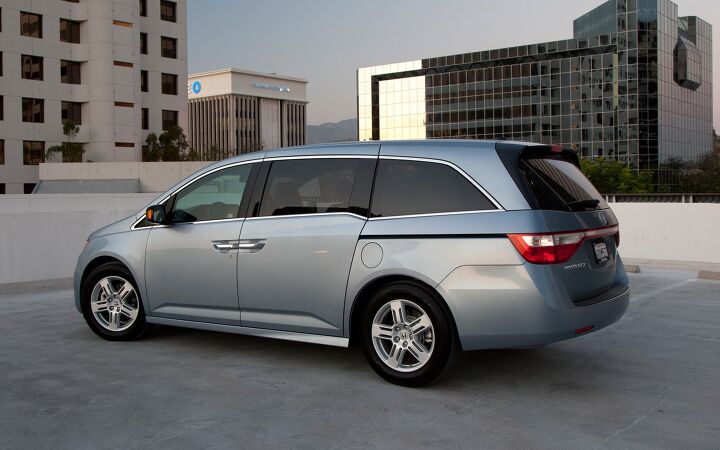IIHS: US Driver Fatalities Fall One-Third In Three Years
Per a report by the Insurance Institute for Highway Safety, driver fatalities in the United States have fallen by a third over the past three years.
Automotive News says the report’s findings come after the seemingly endless recall parade of 2014, which saw 60.5 million vehicles in the U.S. brought in for repair work, an all-time industry record.
The IIHS added that nine vehicles made in 2011 or earlier had no fatalities recorded between 2009 and 2012: Audi A4 4WD, Honda Odyssey, Kia Sorento 2WD, Lexus RX 350 4WD, Mercedes-Benz GL-class 4WD, Subaru Legacy 4WD, Toyota Highlander hybrid 4WD, Toyota Sequoia 4WD and Volvo XC90 4WD. The list marks an improvement in safety according to the non-profit group, when only eight years ago, “there were no models with driver death rates of zero.”
However, while most of the vehicles with zero fatalities are SUVs and crossovers, most of the vehicles with the highest number of deaths over the same period are compacts like the Hyundai Accent, Nissan Versa and Kia Rio. The report confirms this, proclaiming that “with some exceptions, death rates tend to go down as size goes up.” This is a change from a decade earlier, when SUVs and crossovers had higher numbers of deaths due to a lack of stability controls and other systems meant to prevent roll-over.
As far as total elimination of traffic fatalities in the U.S. goes, IIHS executive vice president and chief research officer David Zuby says such a thing is decades away, and would require not only continued improvements in vehicle safety, but changes in road construction and public safety policy, as well. The report adds that the Great Recession helped to contribute toward the decline in deaths, warning that as the economy continues its recovery, and without said policy changes, the decline could reverse.
Seattle-based writer, blogger, and photographer for many a publication. Born in Louisville. Raised in Kansas. Where I lay my head is home.
More by Cameron Aubernon
Latest Car Reviews
Read moreLatest Product Reviews
Read moreRecent Comments
- ChristianWimmer Exterior and interior look pretty flawless for such a high mileage car. To me this is an indication that it was well-maintained and driven responsibly. It’s not my cup of tea but it’s bound to find an enthusiastic owner out there.And with ANY car, always budget for maintenance.
- Fred I'm a fan and watch every race. I've missed a few of the live races, but ESPN repeats them during more reasonable hours.
- Mikesixes It has potential benefits, but it has potential risks, too. It has inevitable costs, both in the price of the car and in future maintenance. Cars with ABS and airbags have cost me at least 2000 bucks in repairs, and have never saved me from any accidents. I'd rather these features were optional, and let the insurance companies figure out whether they do any good or not, and adjust their rates accordingly.
- Daniel Bridger Bidenomics working.
- Michael Gallagher Some math! The cost to produce US Shale derived oil is between $35 to $55/bbl. Middle East oil cost about $15/bbl. If OPEC wanted, they could produce more , driving oil prices below our costs and decimating our domestic industry. We have whispered in their ear that they should endeavor to keep the price above our cost, in exchange for political, economic and security favors. Case in point, during COVID when gas dropped below $2/gal , producers were losing money, Trump had to approach the Saudis requesting them to cut production to raise the oil price above our cost. If the global oil industry was truly competitive, our industry would be out of business very quickly due to our much higher cost of production. Those that long for those covid prices need to realize it would be at the expense of our domestic industry.

































Comments
Join the conversation
"\3 For example, IIHS (1991) reported that the automobile model with the highest fatality rate in the late 1980's was the Chevrolet Corvette Coupe, with 4.7 deaths per 10,000 registered vehicles. The Volvo 240 had the lowest fatality rate for that period at 0.5 deaths per 10,000 registered vehicles." http://www.gpo.gov/fdsys/pkg/GAOREPORTS-PEMD-95-4/html/GAOREPORTS-PEMD-95-4.htm If I remember correctly, that particular car had a couple of years without fatalities 3-4 decades ago already.
If we wanted to further reduce deaths and permanent severe disability from auto accidents the cheapest way possible, we would request everyone in an automobile wear a helmet.